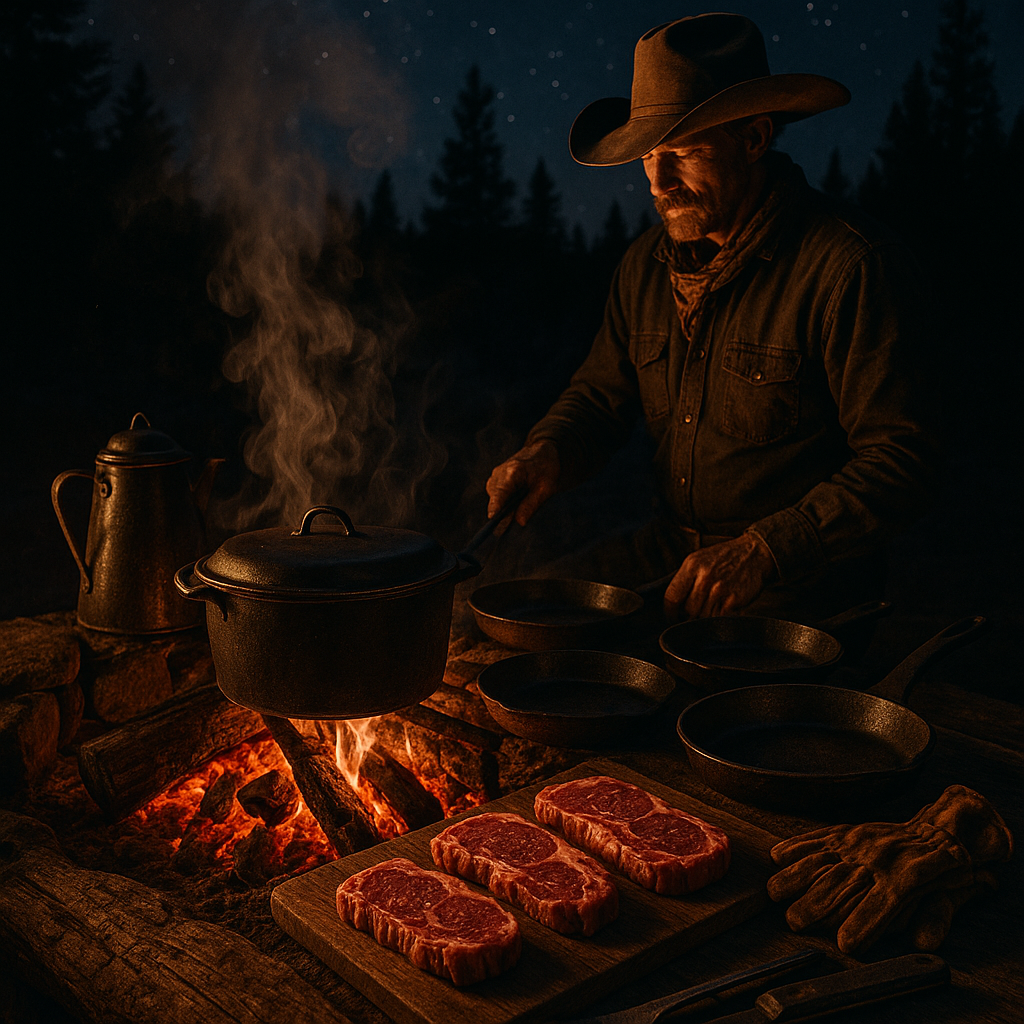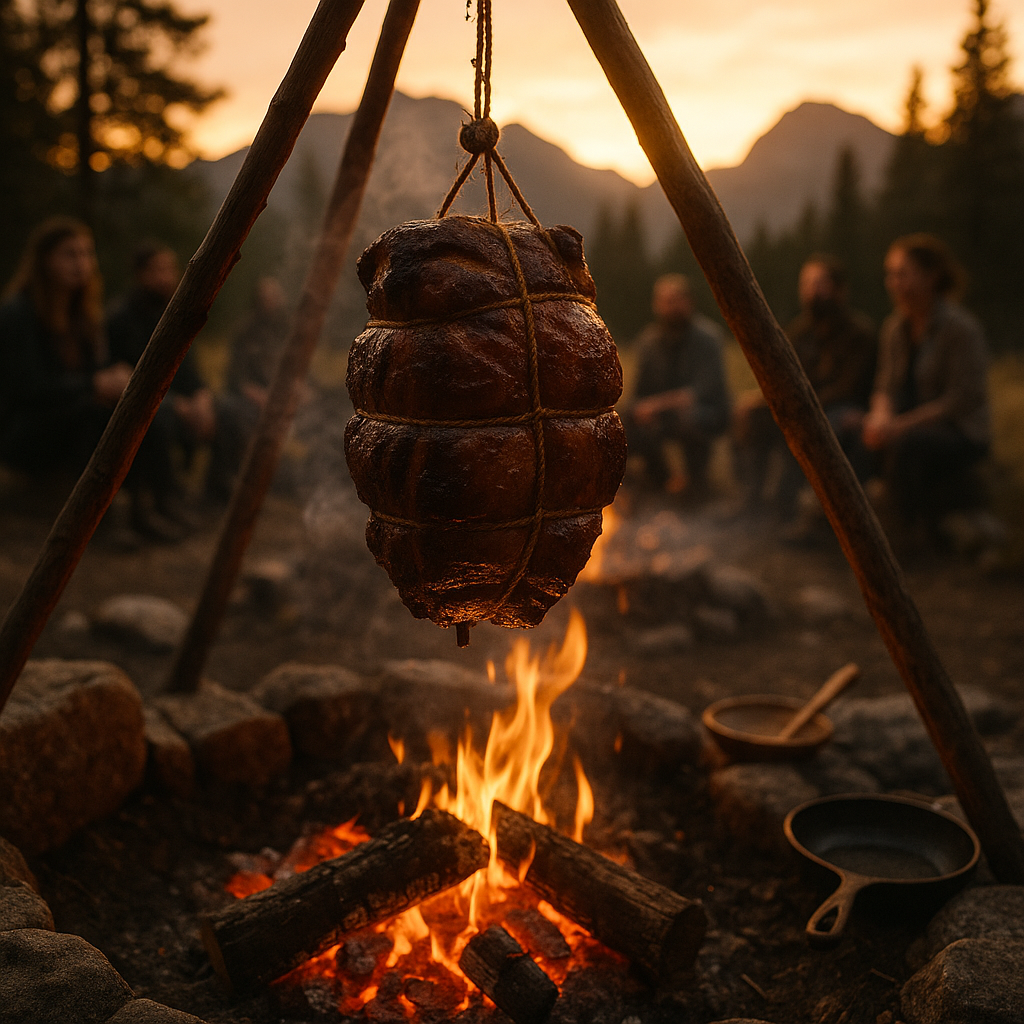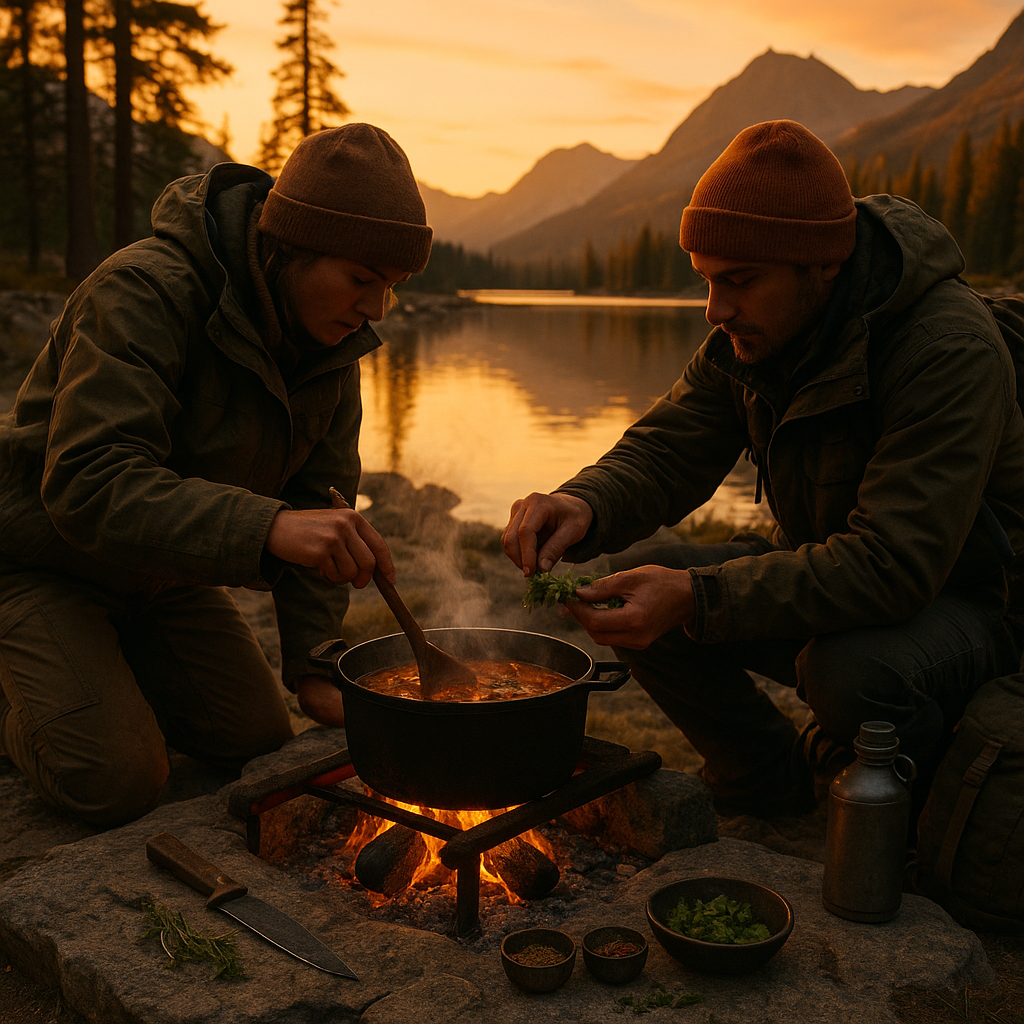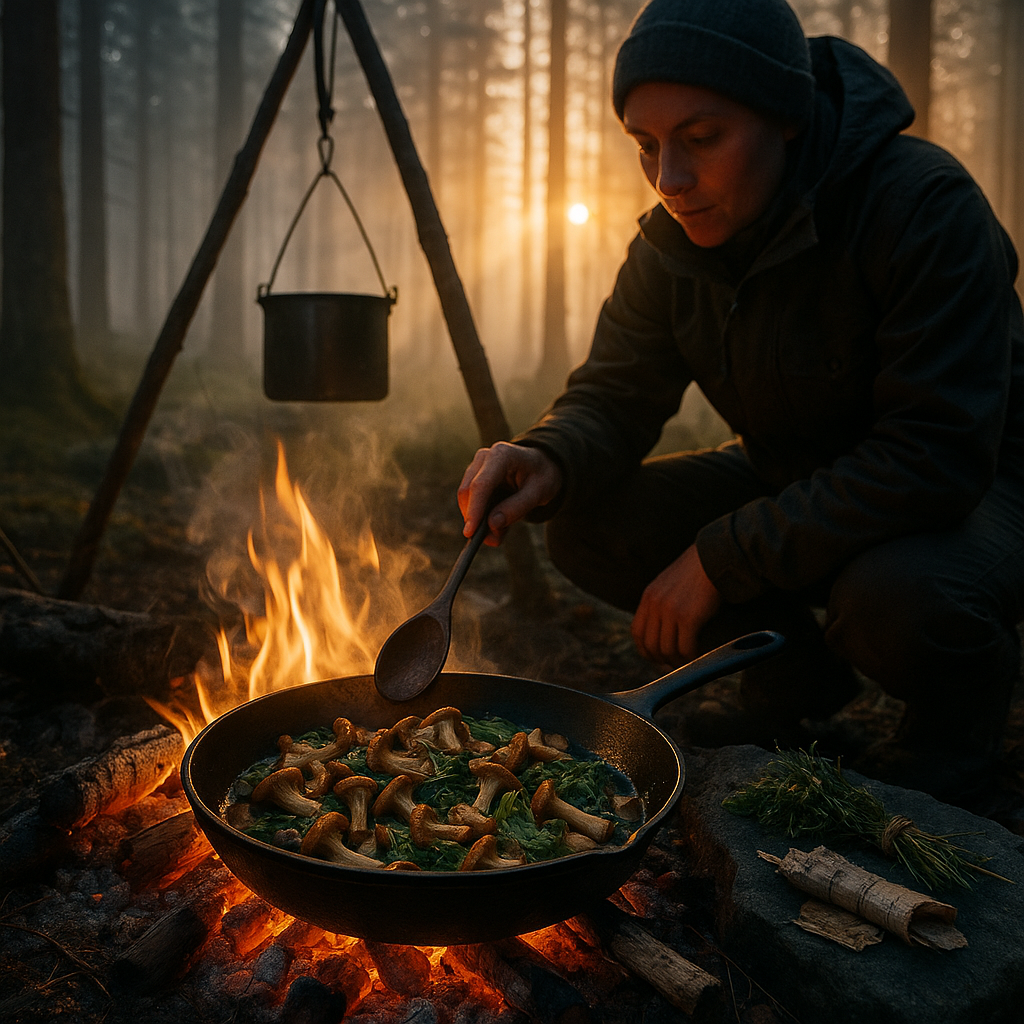Key Takeaways
- Reignite tradition with fire-based cooking: Cowboy-style BBQ centers on simple, fire-cooked meals that draw flavor from wood embers, highlighting the purity of traditional outdoor grilling.
- Master essentials for authentic cowboy grilling: Cast iron skillets, sturdy grates, fire pokers, and natural wood fuels are non-negotiables for achieving rustic, smoky perfection in any outdoor setting.
- Unlock legendary flavor through slow cooking: Classic cowboy BBQ relies on low-and-slow techniques to tenderize meats while infusing them with rich, smoky aromas.
- Homemade BBQ sauces elevate your feast: From molasses-rich classics to tangy vinegars, creating BBQ sauce from scratch adds a personal touch and transforms each meal into a backyard legend.
- Side dishes complete the rustic experience: Savory baked beans, cast iron cornbread, and grilled veggies are must-haves to complement your main BBQ dishes authentically.
- Nostalgia drives the appeal of rustic BBQ: While modern gadgets dominate many kitchens, the unique charm of open-flame cooking connects us to cultural heritage and simpler, more flavorful traditions across the world.
- Outdoor grilling is a communal craft: Gathering around a fire fosters genuine connection, making BBQ more than just a meal. It is an experience steeped in storytelling, camaraderie, and shared moments.
Step into the cowboy spirit with these rustic BBQ recipes and time-honored grilling tips, honoring culinary traditions while crafting meals worth savoring. Together, we’ll reignite the legends of fire-cooked feasts beneath wide skies and the glow of embers.
Introduction
Picture the scene: smoke curling from a crackling campfire, the primal hiss as cast iron kisses raw steak, the mouthwatering aroma of wood embers slow-cooking something legendary. This is the very spirit at the heart of rustic BBQ recipes. A tradition that began long before backyard grills and digital thermometers. Cowboy-style barbecue exemplifies how simple, elemental methods turned humble ingredients into meals as bold and memorable as the open range.
But mastering authentic outdoor grilling is about more than just cooking food. It is about channeling heritage, embracing the patience required for slow, smoky perfection, and creating the kind of moments that draw people together. In the sections ahead, we’ll uncover the tools, techniques, and storied recipes that transform an open fire into a feast worthy of folklore. No matter if your backdrop is a rolling prairie, a quiet forest, or your own backyard.
The Art of Fire Management
At the core of every unforgettable rustic BBQ feast is skilled fire management. Fire is the heart of traditional outdoor cooking, embraced by cowboys, open-range travelers, and culinary explorers alike. Mastering fire takes respect, observation, and a willingness to experiment. It is a living, breathing element that rewards patience and understanding.
Stay Sharp. Stay Ahead.
Join our Telegram Channel for exclusive content, real insights,
engage with us and other members and get access to
insider updates, early news and top insights.
 Join the Channel
Join the Channel
A key to authentic cowboy BBQ lies in building a three-zone fire setup. This technique, handed down by generations of outdoor cooks, ensures both direct searing heat and gentle, indirect warmth for slow-cooked perfection.
Selecting the right hardwoods shapes the very soul of your BBQ. Oak delivers a medium-strong, balanced flavor ideal for hearty cuts of beef, while hickory adds depth and savory richness, making it perfect for pork and artisanal sausages. Mesquite, the wood of Texas legend, lends an unmistakable earthy boldness that seasoned pitmasters treasure for its intense, signature taste. For those venturing beyond the classics, fruitwoods like apple or cherry introduce subtle sweetness, making them favorites in regions from the American West to Eastern Europe.
Building Your Fire Foundation
Building the perfect cooking fire is an art form all its own:
- Start with a sturdy base of natural lump charcoal for consistent, controllable heat.
- Carefully arrange seasoned hardwood logs according to the cooking method you need.
- Give your fire 45 to 60 minutes to mature, allowing smoke and embers to develop their full complexity.
- Maintain your coal bed and temperature zones, adjusting logs as needed for even results.
Experienced outdoor cooks often rely on the traditional hand test, placing their palm about 6 inches over the grill. If you can hold your hand for around 3 seconds, your fire is blazing hot (above 400°F); for slow-cooking magic, aim for a steady 5 to 6 seconds (250 to 275°F).
Meticulous fire management is a skill valued not only by cowboys and rustic BBQ experts, but by cooks from all corners. In South African braai, Argentinian asado, Japanese robatayaki, and Scandinavian stick bread gatherings, the essential mindsets remain the same: patience, adaptability, and respect for the flame.
Essential Cowboy-Style Techniques
With your fire built and steady, it’s time to embrace the core techniques of rustic BBQ. These time-honored methods harness the character of each cut and coax maximum flavor from simple ingredients, blending the elemental with the sophisticated.
The Art of the Slow Cook
Generations of outdoor cooks discovered that patience transforms even the toughest cuts into legendary fare. By maintaining a low, steady temperature (225-250°F), slow cooking allows the meat to baste in its own juices, gradually breaking down collagen and unlocking tenderness. The end goal is the coveted “bark,” the crackling, flavor-packed crust formed by slow rendering and repeated basting. This is a signature feature in everything from Texas brisket to South African sosaties (skewered meat dishes).
Direct vs. Indirect Heat Mastery
Mastering both direct and indirect heat is the mark of a true outdoor BBQ craftsman. Direct heat is the realm of steaks, chops, and sausages, foods that benefit from a quick sear and smoky crust, retaining juiciness within. Indirect heat is the backbone of slow BBQ, allowing ribs, brisket, lamb shoulders, and even whole fish to turn succulent as they bathe in gentle warmth and aromatic smoke.
This dual mastery is reflected globally: whether it’s North American ribs, Brazilian churrasco, or Greek souvlaki, knowing when to sear and when to slow-roast is the difference between merely good and truly unforgettable BBQ.
Signature Recipes and Methods
The heart of rustic BBQ stories lives in beloved recipes, rich with both tradition and possibility. These are dishes that echo with history yet invite endless personalization, inviting each cook to add a chapter of their own.
Classic Chuck Wagon Brisket
No cowboy BBQ is complete without brisket, slow-smoked, fork-tender, and deeply infused with woodsy perfume. Start with a 12-14 pound beef brisket, rub generously with a mix of salt, coarse black pepper, and garlic powder, then smoke patiently at 250°F for 12-14 hours. Every 2 hours, spritz with beef stock for moisture and richer bark formation.
A time-honored secret: once bark has set and the internal temperature reaches 165°F, wrap the brisket in butcher paper (not foil). This method seals in just enough moisture, preserving the nuanced texture that is the hallmark of true cowboy BBQ.
Pit Master’s Fire-Kissed Ribs
The most authentic cowboy-style ribs celebrate pork’s natural flavor. Apply a mustard binder followed by a bold rub of salt, black pepper, and toasted spices. Smoke at 275°F for 3 hours, then wrap with a splash of apple cider in butcher paper. Continue slow-cooking until ribs are tender yet offer just a touch of chew, the perfect marriage of wood, meat, and time.
These same principles shine in global recipes: think Australian lamb smoked over eucalyptus branches, Argentinian beef ribs, or Nordic salmon slow-roasted over birch embers.
Traditional Side Dishes and Accompaniments
The feast is never complete without soulful side dishes, simple, fire-touched classics that round out the rustic table and create warm memories.
Cast Iron Cowboy Beans
Every cowboy cookout, historic or modern, is anchored by a simmering pot of beans:
Stay Sharp. Stay Ahead.
Join our Telegram Channel for exclusive content, real insights,
engage with us and other members and get access to
insider updates, early news and top insights.
 Join the Channel
Join the Channel
- Soak pinto or navy beans overnight to soften.
- Add hearty cuts like salt pork or bacon ends.
- Stir in diced onions, fresh garlic, a touch of molasses, and a spoonful of mustard for depth.
- Cook slowly for 4 to 6 hours in cast iron at the campfire’s edge, allowing beans to soak up all the surrounding smoke and flavor.





Leave a Reply